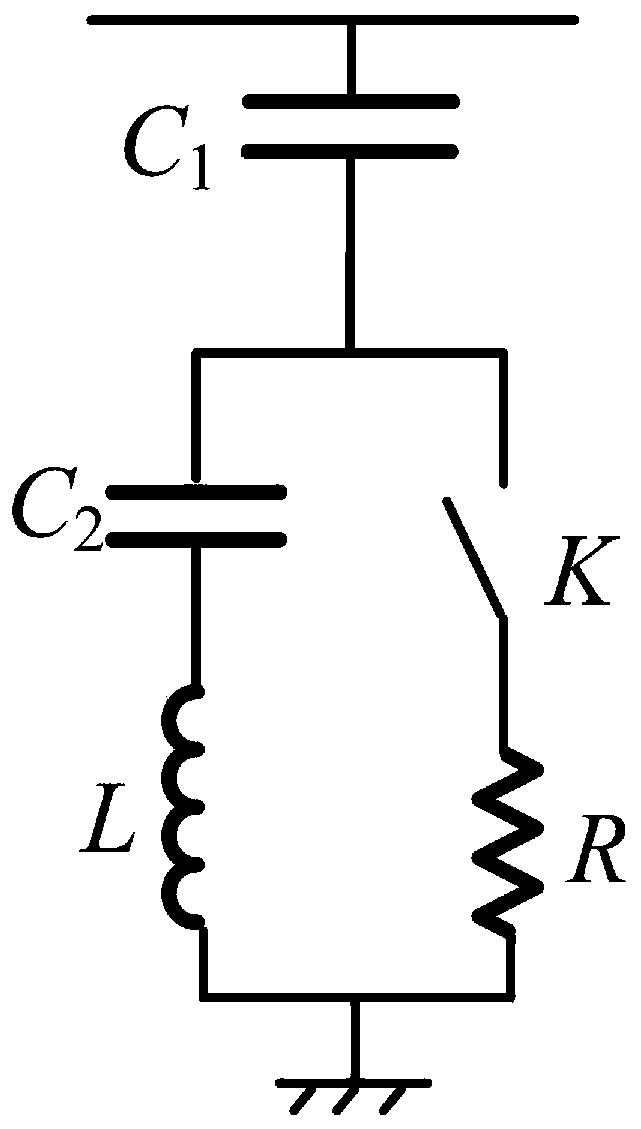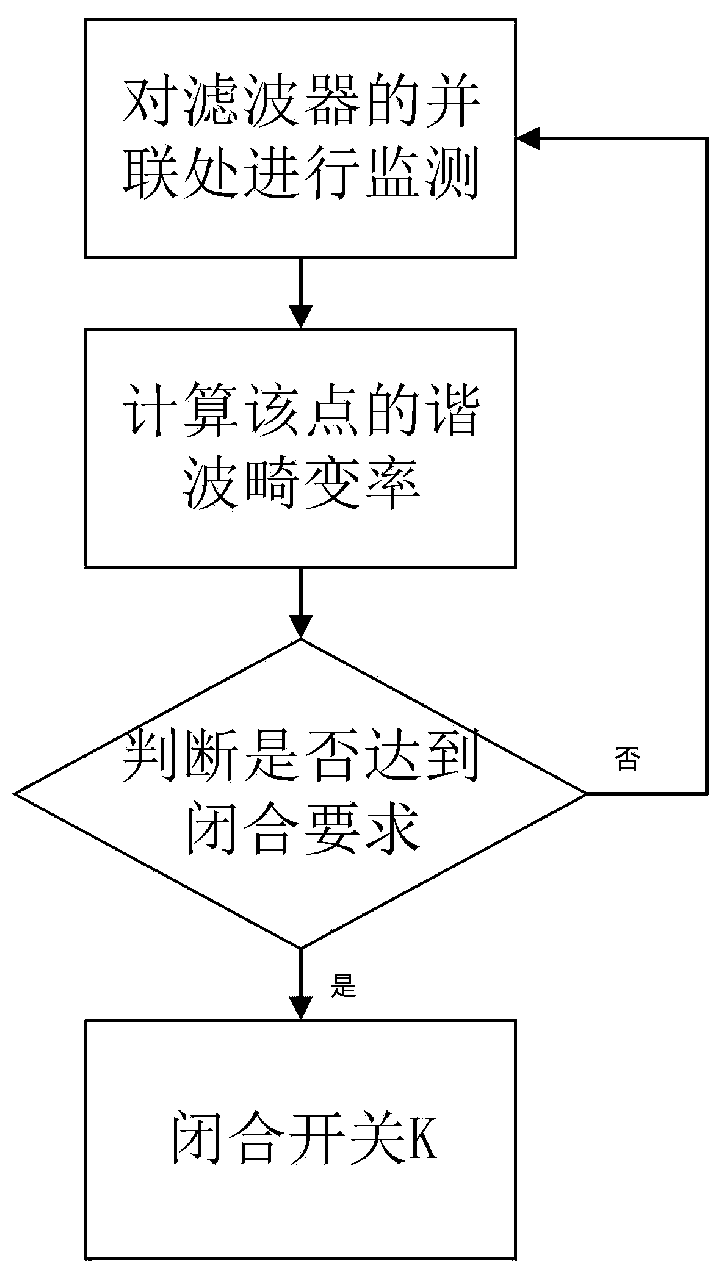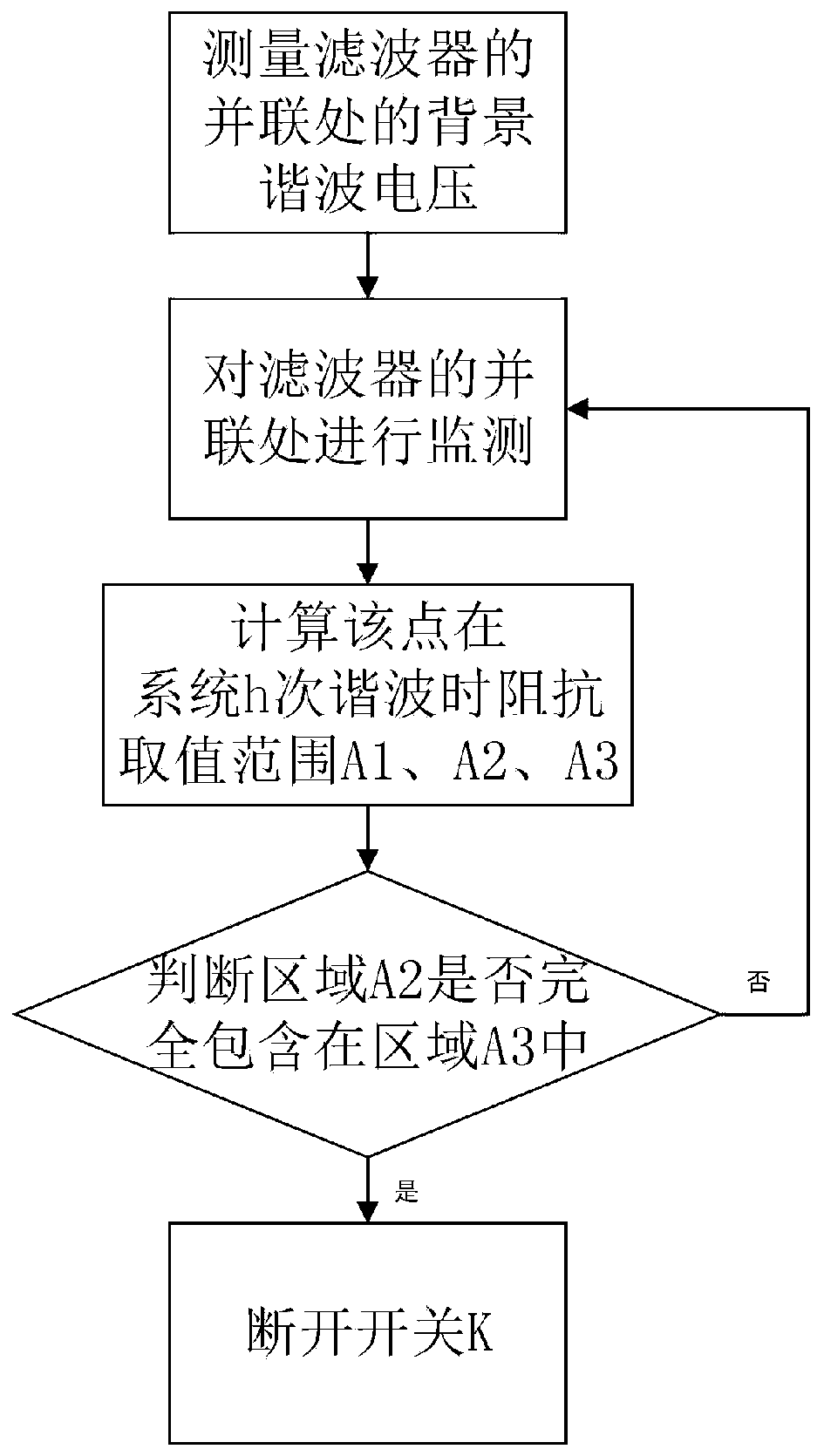C-type filter and switch control method thereof
A switching control and filter technology, applied in harmonic reduction devices and AC networks to reduce harmonics/ripples, etc., can solve problems such as affecting equipment life, increasing active power loss of filters, and increasing operating costs of substations. Heating time, reducing active power loss, and realizing the effect of economical operation
- Summary
- Abstract
- Description
- Claims
- Application Information
AI Technical Summary
Problems solved by technology
Method used
Image
Examples
Embodiment 1
[0038] Such as figure 1 As shown, a C-type filter, including: the main capacitor C 1 , inductance L, second capacitance C 2 , switch K and resistor R.
[0039] When the switch K is turned off, the first connection relationship is formed: the main capacitor C 1 , inductance L and second capacitance C 2 connected in series to form a single-tuned filter for absorbing a single harmonic.
[0040] When the switch K is closed, the second connection relationship is formed: the resistor R is connected in parallel with the second capacitor C 2 The two ends of the series circuit formed with the inductor L form a C-type filter.
Embodiment 2
[0042] A switch control method, the switch control method is applied to a C-type filter described in Embodiment 1, and the harmonic voltage and harmonic current at this point are obtained by monitoring the parallel connection where the filter is installed, And based on this, the switch of the filter is controlled, and then the working state of the filter is switched. The switch control method includes the following content.
[0043]1. Determine the component C according to the non-resonant design method 1 , L, C 2 and R parameters. The resonance-free design method is cited from Resonance-Free Shunt Capacitors—Configurations, Design Methods and Comparative Analysis, Wilsun Xu, IEEE TRANSACTIONS ON POWER DELIVERY (2287).
[0044] S001: Determine C according to reactive power compensation requirements 1 , where Q F is the demand for reactive power compensation, V is the rated voltage, w 1 is the fundamental angular frequency.
[0045] S002: order Among them, the freque...
Embodiment 3
[0087] Such as Figure 5 As shown, a switch K is added to the C-type filter of the 138kV node SX, which is set as a switchable C-type filter designed by this patent, where the reactive power demand is 30MVar, the power frequency is 60Hz, and the tuning frequency is set to 180Hz. The harmonic voltage distortion rate before the filter is installed, that is, the background harmonic voltage distortion rate is shown in Table 1.
[0088] Table 1 Background harmonic voltage
[0089] Harmonic order 3 5 7 9 11 13 15 Background harmonic voltage distortion rate (%) 0.5 1.3 1.1 0.4 0.9 0.8 0.3 Harmonic order 17 19 21 23 25 27 29 Background harmonic voltage distortion rate (%) 0.6 0.4 0.2 0.2 0.2 0.2 0.2
[0090] The system impedance variation is mainly caused by C 11 and C 12 Therefore, considering four operating states, the corresponding system impedance is as follows Figure 6 and Figure 7 shown.
[0091] (1)Scenario 1: C ...
PUM
 Login to View More
Login to View More Abstract
Description
Claims
Application Information
 Login to View More
Login to View More - R&D
- Intellectual Property
- Life Sciences
- Materials
- Tech Scout
- Unparalleled Data Quality
- Higher Quality Content
- 60% Fewer Hallucinations
Browse by: Latest US Patents, China's latest patents, Technical Efficacy Thesaurus, Application Domain, Technology Topic, Popular Technical Reports.
© 2025 PatSnap. All rights reserved.Legal|Privacy policy|Modern Slavery Act Transparency Statement|Sitemap|About US| Contact US: help@patsnap.com



